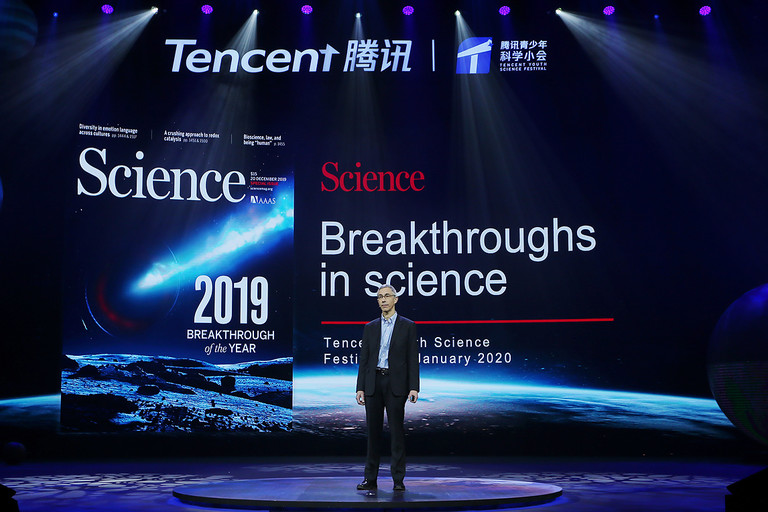Our Greatest Challenge: Rearchitecting the Planet to Accommodate 10 Billion Humans by 2050
By David Wallerstein, CXO, Tencent
We live in exciting and challenging times. Information flows rapidly to our connected devices from anywhere in the world. Ideas and priorities fly across our screens at the speed of light. There are social challenges, entertainment options, and new experiences begging for our attention. These opportunities and the excitement driven by our technological era are often juxtaposed against the more mundane responsibilities of our everyday lives: working, taking care of family, earning enough capital to pay for our daily needs and so forth.
It can often seem that between the challenges of meeting the basic needs for providing for our everyday livelihood, and enjoying the exciting entertainment offerings of our era, there is little time to consider even more challenges and issues happening around us at a higher level: planetary scale challenges.
We can often forget about the natural, planetary forces evolving around us, being shaped and altered by our every day actions.
For many urban dwellers, now at 55% of our planet’s 7.7 billion human population, and rising to 65% by 2050, the natural world can sometimes feel a bit distant. The urban dweller may experience a more powerful connection to nature when a storm rushes through their city, when the air quality doesn’t seem great, and, in some incidences, when water levels rise, or water access is curtailed, as experienced by Cape Town, Mexico City, Perth, and other parts of the world in recent years.
For many of us wherever we may live, it could be argued that our direct connection with nature has been diluting, with all of the demands on our attention, responsibilities and occasional spoils of everyday modern life.
Unfortunately, there are powerful trends occurring on Earth that threaten the modernization that has led to varying quality of life improvements since the dawn of the industrial revolution. Even though we may all have many ideas and priorities on our plates, fundamental shifts in the “planetary ecology,” such as climate change, water stress or endemic polluting practices in our economies, beg all of us to pay attention.
The challenge now is for us to further build on the scientific and technological advances humanity has made over the centuries, but to do so with a far enhanced architecture that is resilient. A resilient architecture is one that:
• Can provide for its function without negatively altering the natural ecosystems around it.
• That can continue to provide its targeted function with potentially exponential scalability. The solution can work well at 10 billion human population and up to 15-20 billion. It does not engender greater risks with scalability.
• That can therefore be a solution for humanity for many thousands of years.
• That can allow humans to realize intended goals (e.g., have electricity, have heat, have fresh food) without negatively affecting the ability for another critical resource area to function. For example, if you use contemporary fertilizer for agriculture, you will likely pollute precious water sources, i.e., one solution in a critical needs area negatively impacts another critical needs area.
Therefore, the key goal for our era should be stated as:
Rearchitecting the Planet to Meet the Needs of 10 Billion Humans, in a way that is Resilient, and Sustainable for Thousands of Years.
Establish a global infrastructure now on Earth that can be the foundation of how we meet our needs going forward as homo sapiens on Earth.
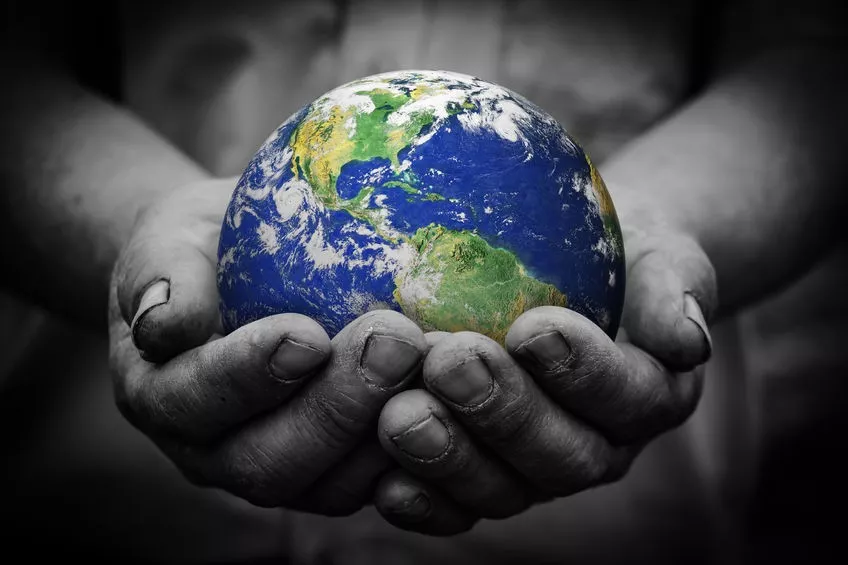
Human Needs: The Importance of “FEW-SHES”
It may seem that with all of these new technologies emerging around us every day, that human beings are evolving rapidly, and that the technologies are struggling to keep up with our rapid evolution. But this is NOT the case. The most basic needs to support human life over the millennia have continued to remain remarkably consistent. There’s very little evidence of evolution in human physical characteristics for the past few thousands of years. Certainly not since the industrial revolution that ushered in our modern era. Therefore, charting the specific survival needs of humans remains relatively simple and understood. We are now solving for the scaling requirements to meet the basic needs of all human beings as our population numbers grow.
A lot of the things that we think we need everyday, in the modern world, are actually arbitrary from a pure human survival perspective. If we focus on pure human survival needs, we can narrow them down to a few simple categories. I believe the following categories below are most important and fundamental:
1. Food
2. Energy
3. Water
—that is, FEW
4. Safety, Security: Trust in our community and neighbors
5. Health: maximizing our bodies’ health and performance potential
6. Environment: clean air, land, sea, ecosystems
7. Shelter
—that is, FEW-SHES
I have written and discussed FEW elsewhere, but now I extend the FEW concept more broadly to “FEW-SHES.”
Take away the stability of any one of these FEW-SHES factors, and you have a recipe for human disaster. Take number six, safety and security: if you suspect that you're going to be attacked or subjected by another people, then you prepare to defend yourself, and the conflict can escalate with huge consequences. Take away number 1, food, and you have starvation and malnutrition, conditions that still affect over 2 billion people on the planet today, and those numbers could grow significantly in the coming years. The list of examples can go on and on.
The challenge now is to establish new architectures that provide all humans on Earth with the necessary access to the 7 FEW-SHES factors above, in a resilient way for thousands of years on earth, potentially even growing to a 15 billion human population and beyond. If we state it more grandly, we can solve for the future fundamental needs of mankind if we get this current transition right.
We can shift our current status quo from the situation of endangering our planet every day, to being able to live here sustainably for the rest of imaginable time.
And many of the technologies and solutions we need to foster are within our reach right now!
Our Current Planetary Dilemma: An Overview
Many of us have heard terms like “climate change” or “pollution” and aren’t really sure exactly what it means. Sometimes we can’t see it with our own eyes, so we don’t know if it’s real. Some people don’t believe that there is really greenhouse gas out there, because they can’t see it.
The problem with much of our modern architecture today, from everything from our coal fired power plants, to our gas powered airplanes and cars, to our fertilizer, to our modern plastic, is that these solutions were:
• never designed to scale to many billions of people using them around the planet.
• never simulated to imagine what the ecological effect would be if the solutions did scale to current human populations numbers, and beyond.
• developed with weak understanding of the negative ecological or even planetary scale side effects.
• their creators and initial backers probably never imagined that the solution could be so successful.
This is something that technologists in the modern era can understand. Consider the Internet. In the early days, the Internet entrepreneurs felt the Internet could evolve into something meaningful and ubiquitous, but we weren’t certain, and the idea that the internet could become more core to everyday life seemed like an impossible dream. We wanted new users to enjoy an Internet experience, but it was hard to imagine 100s of millions of people using it.
Then, within a few years, rapid growth happened and we needed to catch up with market demand. It’s simply impossible to accurately simulate all of the market impacts, technological growing pains, and opportunities, i.e., all of the various issues that you’ll need to deal with as you scale a new business. To survive, you must structure teams to rapidly respond to both identified and anticipated problems, and even better if you structure teams to deal with the inevitable problems that you don't know will happen yet. As an entrepreneur in a fast moving space, you must assume that new challenges will come up daily, and you must identify and deal with them before they become a larger issue. Moreover, at every step regulators are watching for any perceived missteps, and the media is quick to amplify any issues that occur in the market.
Just imagine if the plastics industry faced the dynamics of the modern Internet industry and embraced this kind of product development and market response approach to their fundamental mission: “We keep things fresh, clean, easy to transport, easy to segment as a unit, and help our customers appreciate those products to help do their core business.” If the plastics industry could proactively stick with their mission, but anticipate and search for challenges and problems, they would like have introduced new types of plastic substitutes a long time ago, finding new plastic substitute solutions that don't become micro plastics, polluting Earth’s ecosystems, using various toxic chemicals and fossil fuels. Fortunately for them, until recently, the government related backlash globally has been muted and the unsuspecting public has been docile. It seems harder to have a personal opinion on chemicals, toxins and planetary ecological impacts than it is on content, emotions, and ideas.
When plastics were first introduced, they probably didn’t seem like much of a threat. Modern plastics seemed like a nice solution at a more modest scale, but then become an ecological game changer at the massive global scale that they affect global commerce today. A lot of our current global challenge areas involve the introduction of a technology, a solution or an architecture that initially solved an important problem at small scale. However, at massive global scale, the solution actually started to poison the Earth.
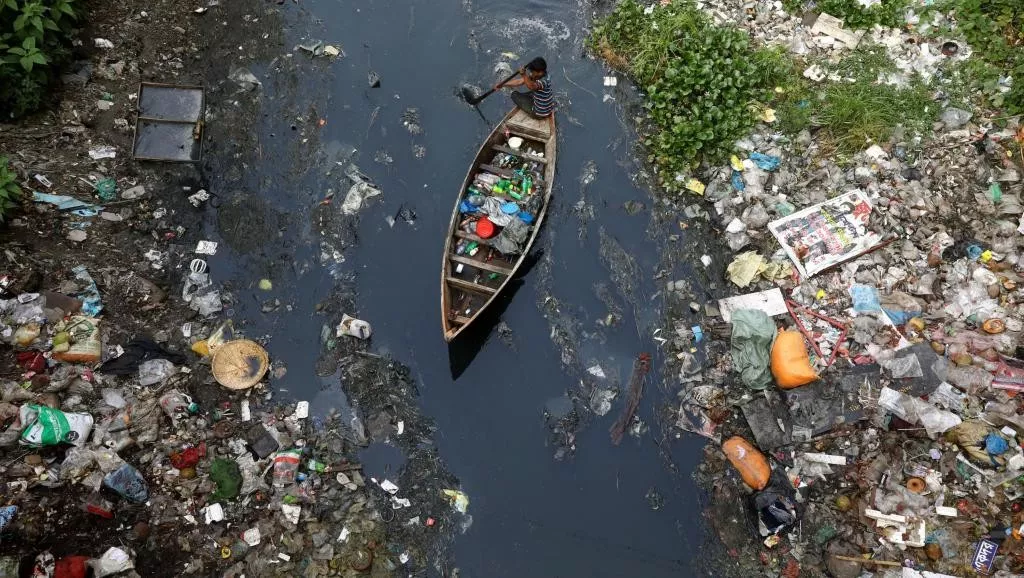
Part of the further challenge is in trying to use validated science to first identify a problem with an existing practice or solution, getting a global consensus that there are harmful effects and significant risks, then getting the public and political leaders to be willing to take any action. The polluting or risky status quo behavior, which is the outcome of historical investments in sub-optimal architecture, continues to wreak its damage as society tries to determine what to do next. As we know from our modern day climate change debate, the process of determining what to do next can take decades. During this soul searching time, the pressures and risks to humanity continue to mount.
Can We Simply Characterize the Key Planetary Challenges on Earth?
With all of the activity occurring by 7.7 billion people per day on Earth, how do we upgrade to a resilient architecture? How do we provide for “FEW-SHES” for all, and stop creating new problems for other aspects of the FEW-SHES equation? How do we do this in a way that meets the needs of everyone on earth, for thousands of years into the future. Factors like climate change make it even more complicated to provide for FEW-SHES, and the complication may only grow in the future.
The current global focus has fortunately shifted to climate change. With every year we wait to do something about it, the problem compounds as the global population adds massive amounts of greenhouse gas emissions to the planet every day. The amounts are really hard to imagine. How does one try to conceptualize a new 37 billion tons of CO2 in the sky each year? That’s just CO2. So if you figure that an average compact car is roughly 1 ton then imagine 37 billion new compact cars floating around in the sky each year. And that’s just one kind of new car floating around each year. There are other green house gasses beyond CO2. The scale of modern day human atmospheric transformation has become astounding.
We accept this because we have existing sub-optimal infrastructure that we’ve scaled up to operate, this infrastructure requires the emission of greenhouse gases as a side product of their operation. That is, the default outcome of operating these outdated designs is that they produce dangerous by-products for humans and the planet, like pollution or greenhouse gasses.
However, it is now clear that we do not need gas burning in a engine to move on wheels on the ground, and that the performance of a Tesla or NIO can exceed those of traditional gas powered cars. If you think you need to move massive amounts of coal and water through a power plant to produce electricity, watch a simple windmill turn in the wind and realize that both are producing a flow of electrons by a turbine turning.
One solution uses the pressure of water vapor, and the other uses the natural forces of the wind. Just different ways of getting the same final result. One way has a huge impact on the chemical composition of the planet (e.g., using coal to create water vapor, and turn the turbine), the other way is planet neutral, using the force of naturally occurring wind, and can be scaled beyond our current imagination, with significant benefits for providing FEW-SHES.
Time Sensitivity
The key time-sensitive challenges to be addressed on Earth are the following. They relate to Food, Energy and Water (FEW):
Food: Global agriculture is a moving target. If your climate is changing, that means that certain weather behavior in your region may no longer apply to your assumptions. When your farm was established, you had certain rainfall, temperatures, wind, sunlight, that may not apply anymore. This is being experienced more and more around the world. Furthermore, as the planet’s climate becomes dynamic due to the changing composition of the atmosphere—a process that takes decades that play out according to scientists—farms may not have a “new normal” to adjust to for some time. That is, each year, for the next few decades, could see some new variance in conditions. We are likely to keep shifting between new reality, to new reality, as the Earth adjusts to the changing atmosphere. We will likely not reach a new normal until we stop changing the earth’s atmospheric composition, and the planet has decades or hundreds of years to readjust and achieve a new balance.

We need to assume that due to water stress and climate change, our plants are going to face more stress in our traditional agricultural regions. We can expect that in some years there won’t be enough rain in an important agricultural region, or too much rain, heat, frost, and farmers will need to develop a new playbook for taking care of their plants that doesn't currently exist.
Place these forecasted stresses in the context of the human population growing to 8.5 billion by 2030 and 10 billion by 2050, and the challenge is truly daunting. Everyone wants to eat.
But I’m oversimplifying. To help our plants grow, we are very dependent on modern fertilizer, which for all of its benefits, has some nasty side effects in poisoning our waters and the topsoil that is already under stress. Fertilizer has been a powerful solution for feeding the planet past 2 billion people at the time it was developed in Germany in the 1910s—we’ve had a terrific run on Earth growing more food since then—but over time the polluting effects have become very clear. Add further to our modern agricultural challenge, the high dependence on modern agriculture on other chemicals and pharmaceuticals: herbicides, pesticides, antibiotics and other methods of ensuing that we have a safe food supply. We can see that the “Food” challenge on earth has a vast, complex scope.
Agriculture needs to be reimagined as a critical priority. Maintaining the current level of agricultural productivity around the world will be a challenge for the coming decades.
Indeed, it is a daily challenge already for many people on Earth: 2 billion people on the planet are currently starving or malnourished.
The problem is further compounded by meat. That is, our “food” that needs to eat a lot of “food” to grow up to become our “food.” Relating the challenges of meat to the issues mentioned above, just consider that as the human population grows, if the proportion of meat in human diets continue, then the amount of meat demanded will grow considerably, as all of those “human food animals”—the cows, the pigs, the chicken— will need their own food source. The challenging dynamics mentioned above regarding growing the agricultural productivity on Earth are further compounded by trying to meet the challenge of “feeding our food.”
Energy: Shifting global architectures away from emitting greenhouse gases that create pollution, demand water resources, and require fuels sent at considerable risk and expense from far away countries. This is both for power generation, as well as transportation. This includes providing heat and cooling for living spaces, and hot water, which for many countries, these two areas alone contribute up to 40-50% of the national energy budget. Much of our human energy needs are just to keep our spaces and water comfortable for our bodies.

Water Scarcity and Pollution: Our daily activity on earth is steadily polluting our water sources and climate change shifts rain patterns in numerous ways. Water scarcity and quality is therefore an area that is immediately made more complicated by human activity and climate change.
Water is absolutely central to key survival functions, like hydration, sanitation and of course agriculture. But it is also in conflict with current energy needs, as the main thermoelectric power generation sources are totally dependent on the existence of abundant fresh water. So water needs often face a “tug of war” for demand between agriculture, urban needs, industry and energy. When we solve for intelligent water use on Earth, we are immediately addressing factors related to availability for agriculture, urban areas and industry, and hopefully reducing the dependence on water for power generation, except in those parts of the world where water is abundant.
FEW as a Nexus
Despite the scale of the challenges around FEW, there are also elegant solutions available to mankind right now. Powerfully, with FEW, when you begin to solve for one area, you are also solving for another.
• When agriculture uses less water, you have freed up water resources to use for other applications, or more agricultural products.
• If you can decouple the production of energy with water, then vast reserves of water can be intelligently channeled more directly to other applications. Importantly, your power production capability is not threatened by water stress itself. If necessary, your resilient power generation capability like wind or solar power can be used to create fresh water as well, without requiring water in the power generation process itself. Win-win.
• With more intelligent water treatment and management, we can save on the energy and inputs necessary to create essential fresh water, and we can effectively deal with wastes and polluting chemicals in our water that are not currently addressed by traditional water treatment systems. We can reduce waste of freshwater, by identifying and responding to leaks in a cost effective manner.
Each improvement aspect strengthens the other. Failing to address one area can make other access of the nexus more vulnerable.
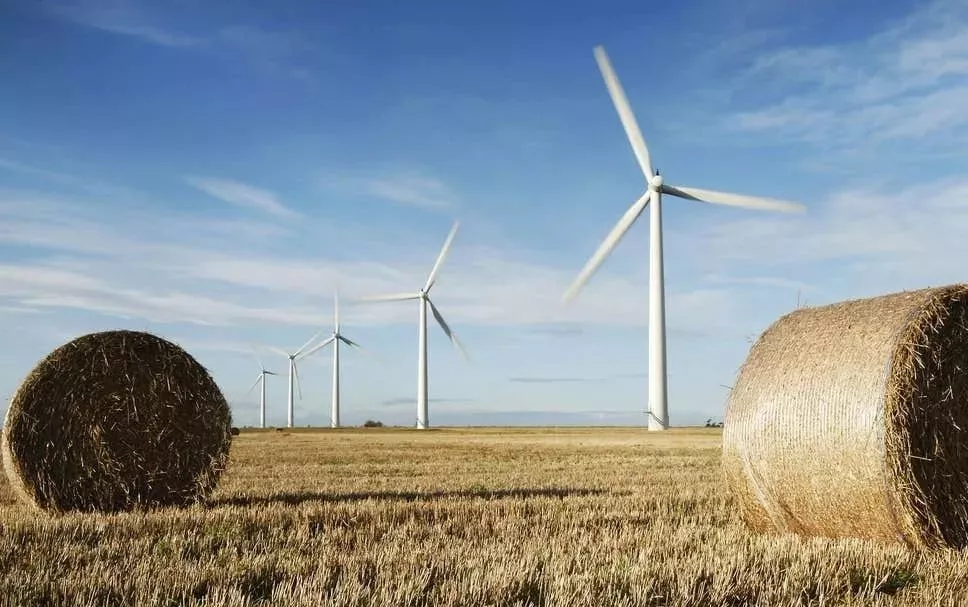
The “Market Failure” of Capitalism and “Return on Investment" Thinking
Bold ideas beg some simple questions. For example, who’s going to pay for this? Where’s the money going to come from? Will investors be willing to fund any of these transformational ideas?
Therein lies a major challenge for trying to rearchitect the planet: dealing with what I will call the “market failure of capitalism” and “return on investment” thinking.
Imagine this: you've been making gas powered cars for 50 years. You have a massive global supply chain to make your gas powered car. Each component now has low cost and is pretty predictable. The designs work. Your energy supply network for these mobile vehicles—facilities called “gas stations”—are everywhere. Special liquid fuel— called gas—is extracted from a far away land, refined and processed, shipped across the ocean, driven across a country, then pumped into the ground into holding tanks, then delivered into the tank of a car with a special pump design. As unusual and counterintuitive as the architecture is, it is everywhere, already. The standards have already been set, the capital investment has already been made, it works now, at massive modern human scale. Why change this? How are the investors going to get their money back if you change this architecture, or stop using it? Shutting down or changing this global supply chain would feel like an attack on your property rights and investment return potential if you’ve been funding this infrastructure.
And yet we all know that architectures like the gas-powered automobile ecosystem is one of the systems that it is threatening to life on Earth. We now know it can be done much better. However, doing what we know is right for the planet may squarely fly in the face of a capitalistic mindset that prioritizes return on investment as the highest priority. We find ourselves in a dilemma that our philosophical ancestors did not sufficiently prepare us for.
Do we allow for the new investment in next generation optimized infrastructure, with its uncertainty, it’s potentially higher cost structures, and it’s evolving supply chains? What if investors just don’t want to make the investments any more? It’s not that they have a problem with the new intelligent infrastructure, but just that it’s not the right fit for THEM. They’d like to be more conservative, go with existing, proven infrastructure, and addressing planetary challenges is not in their investment mandate. After all, most investors are investing the capital of other people for a fee, as professional investors.
Their mandate is ROI strictly. Most investors would assume that addressing global problems directly needs to be done by others who have that in their mandate.
Then what happens if just most of the investors on Earth all think in a similar way: generally risk averse, treating the primary objective as ROI, viewing a new architecture as being highly risky, not seeing addressing the challenges on the planet as part of the investment job, and investing other people’s money with their primary objective being to maximize return for those capital owners? Put differently, just think of buying a stock on the stock market, and how much you would like its price to go up, and how disappointed you will feel if you loose money. Magnify that sentiment by all investors on Earth.
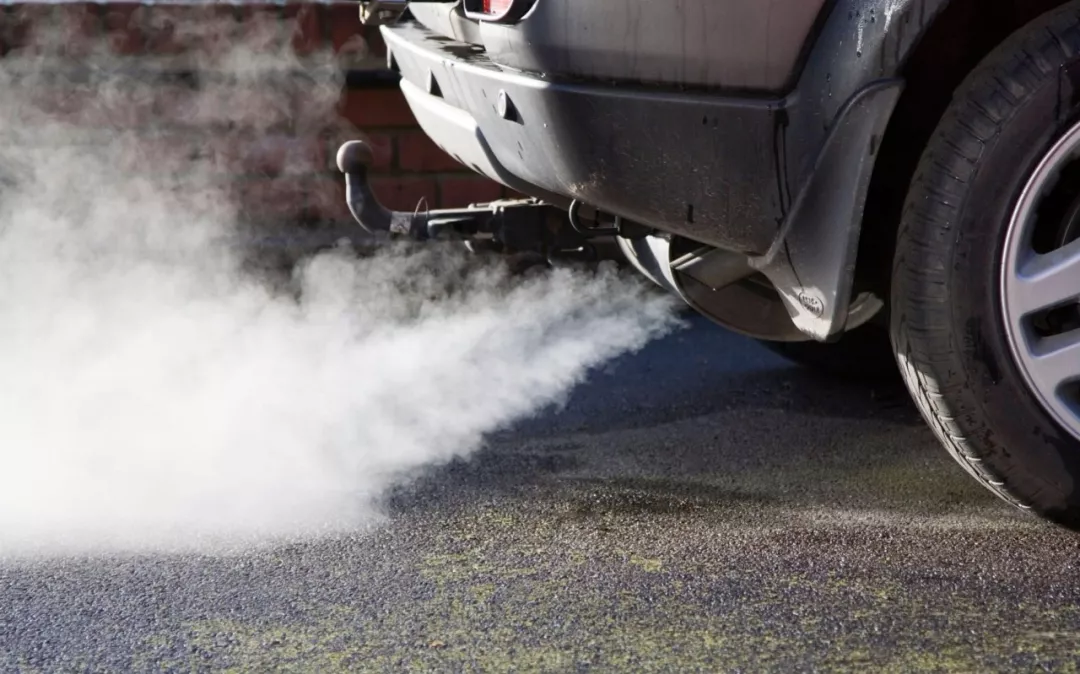
Now we can see why backing new resilient FEW-SHES architecture can be slow, can take a lot of time, and is accompanied by a lot of uncertainty. The FEW-SHES solutions face tremendous pressure to show that they are economically superior to the status quo problematic infrastructure options from day one. This is in addition to needing to be superior in terms of their resilience, efficiency, scalability and other critical measures for the planet overall. Basically, nobody likes to loose money. Perfectly rational investors, as anyone who has ever bought stocks, has a pension fund, or a life insurance plan can recognize, are understandably reluctant to step up to address global challenges. This logic is likely to hold until the status quo becomes more obviously unviable.
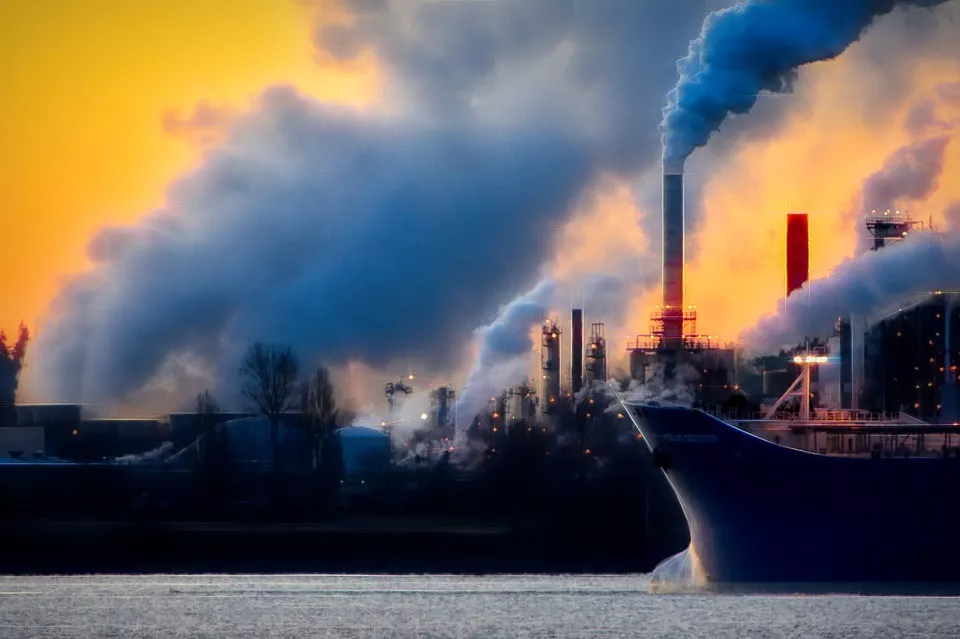
Enter Government Initiatives: Can Governments Help Fill the Investment Gap?
So how do we encourage the necessary investment to upgrade critical architecture on Earth to embrace resilient FEW-SHES solutions, and do it urgently to address climate change dynamics with a growing human population?
Governments have a different role than professional investors. They get significant access to the wealth of society via taxation, sometimes over half of all revenues in a nation, and with this value under management, governments can seek to invest in new architectures for society as well as commit to ongoing operational expenses (e.g., medical care, teacher’s salaries for education) to ensure that the critical needs of their citizens are being met. It is a role that humans accept, and in most societies the discussion revolves around precisely how much governments can tax and how those government revenues should be spent most productively.
This ability to prioritize healthy outcomes for communities, nations and the planet— going beyond classic ROI considerations that characterize traditional investors and individuals globally— make government actors critical players at this special time in human history.
The benefits to society in shifting to “green” are not immediately and obviously captured by free market thinking. For example, more abundant fresh water could actually drive down the price of water, and less leaky water pipes might mean that a water utility actually bills a customer less money for water, as they are not passing on the cost of the water loss to customers (albeit in a rather tricky way). We can all agree that having abundant water supplies are an inherent social good, minimally to ensure that all human and ecosystem requirements are met, and then providing an additional benefit with nearby freshwater lakes, rivers and environmental resources that further enhance local quality of life. How to put an objective economic valuation on all of that? In many cases, governments are more likely to be in a position to overall value these entire outcomes vs just classic investors. Moreover, they can have a very long time horizon for investments, not dealing with the classic constraints of needing to outperform market returns within a typical period of 8-10 years.

Take the area of energy as an example. One interesting aspect regarding renewable energy infrastructure is that it basically empowers a nation or region to access its own local energy sources. Green energy is local energy. The infrastructure, such as a wind mill or a solar panel, allows a region to convert the natural wind force or sunlight in the region directly to electrical power. The energy was an “untapped” local resource, that can now be converted into electrical energy for local use. Partnering to deploy these assets is a facilitation of energy independence. Power generating resources dependent on fuel, e.g., coal, oil, biomass, effectively sign up a region to a long term dependence on outside sources to continuously provide an uninterrupted source of energy. In the cases of the global network of coal fired plants, if the coal ships do not show up at the dock, no energy can be provided to the local population. When a sovereign wealth investor supports an investment in these types of sources of green energy, it is ultimately a move that should empower greater long term autonomy for the region, not dependence on foreign resource inputs.
There are now several examples of governments stepping up with capital for global green infrastructure initiatives. From China’s Belt and Road Initiative, to Norway’s Government Pension Fund, to Abu Dhabi’s Investment Authority, and many others. A key point here is that their role may even be more critical than many expect to more decisively usher in a transition to resilient architectures that can accommodate human scaling requirements in the 21st century. Moreover, their efforts can be amplified by partnering on global investments and aligning on shared objectives to accelerate architectural transitions.
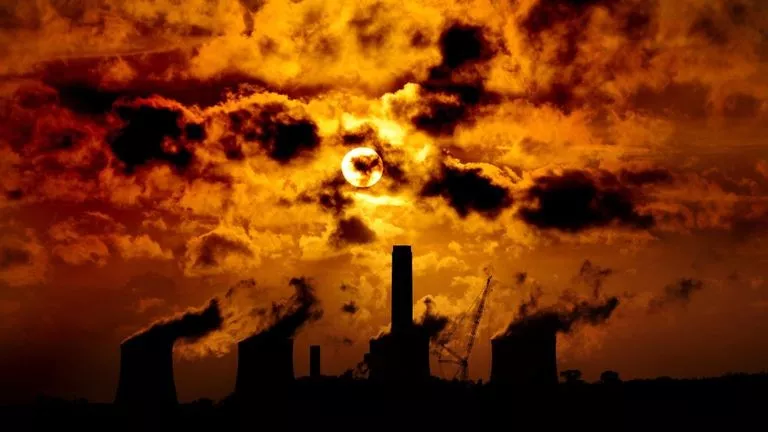
A Blueprint for a New Architecture on Earth: 10 billion people by 2050
Let us now change gears and consider various steps that could be taken cost effectively and practically to re-architect Earth to accommodate 10 billion people by 2050. Despite the extensive discussion regarding the need for investment above, many of the steps that need to be taken today can be very cost effective on a project by project basis.
Below I provide a brainstorming list of ideas that are either already in motion today, or highly attainable with a reasonable amount of additional R+D and funding. There are so many possibilities. These are just some of the ideas of keen interest to this author.
Food
• Artificial intelligence solutions to maximize plant health, thereby maximizing plant productivity and limiting resource input waste.
• Global forecasting and accounting for all agricultural supply and demand on Earth in near real time. Providing guidance to farmers on all aspects of farm planning and crop selection optimization based on constant shifts in the global market.
• Sensors in the sky: leveraging satellite constellations to tell us in near real-time what the on-the-ground productivity of all outdoor agricultural productivity on Earth is. Identify any commodity risks in advance.
• Reducing meat consumption significantly to rationalize the entire human food value chain, reduce green house gasses, drive more nutritional and protein output directly to humans vs routing it inefficiently through animals, much of it resulting as waste.
• Further develop sophisticated next-gen antibiotics which protect plant health, without affecting animal and human populations, and without contributing to anti-microbial resistance (AMR).
• Develop indoor farming facilities in conditions and regions of the world with abundant energy, water, heat and other favorable factors, as a diversification on centralization of dependence of agricultural yield from a few key economic regions. Encourage more indoor farming adjacent to urban centers, to further diversify dietary choices and reduce dependence on centralized agriculture, but locate facilities where they can benefit from 100% green energy sources.
Energy
Replace fossil fuels with renewables, not just only to reduce greenhouse gas emissions, but also to shift to local sources of natural energy, and reduce the water dependence inherent in the thermoelectric power generation process.
Leverage machine intelligence to do the following:
• Make all existing thermoelectric power production processes as efficient as possible. Limit the usage of fuel. Limit the usage of water. Drive profits. Limit waste and pollution.
• Apply machine intelligence to drive efficiency with all power production.
• Coordinate the swings in energy demand by customers across the grid to better match demand with renewable energy supply. This can be done by making power hungry industrial machines, pumps, home electronics, and appliances “grid connected and aware.” Reward the use of renewable energy by introducing dynamic pricing mechanisms that reflects the prioritization of renewable energy vs dirty sources. Ensure that renewable energy is priced the lowest in the grid to consumers, most likely with a taxation on the comparatively dirty sources of energy. Intelligence solutions for the grid, for industry, for consumers, that leverage the pricing input can be optimized to pass on savings to customers and all in the value chain.
• Help customers track their cost savings by using intelligent energy solutions, and search for ways for them to achieve even greater savings with energy usage.
• Help grid operators manage the new renewable rich energy source environment, with an increasing number of participants selling energy onto the grid, including the potential for private individuals to participate as energy suppliers. Intelligence helps to manage the rapidly growing supplier base and optimize prioritization and decision making regarding from where to purchase energy.
• Develop portfolios of grid storage solutions across a region. Everything from two way hydropower facilities that can act as batteries (I.e., pumped hydro), to new “vehicle to grid” capabilities that could potentially allow electric vehicles to also sell energy back to the grid as well as buy energy from the grid. An on demand fleet of plugged in electric vehicles could become a meaningful source of energy at the grid level, with the further benefit that, like individual air conditioners purchased by home owners that provide a home with cooling vs a centralized solution, the investment in the storage infrastructure (i.e., the vehicle battery) was made by individuals, not the power companies or state.
• Match various energy needs more accurately to the most ideal way to satisfy the energy needs. For example, heat buildings with geothermal energy transported by water or waste heat, not electricity or heat from burning coal. Focus on achieving maximum efficiency for the targeted application.
• More systematically explore geothermal capabilities, not necessarily for power generation, but for space and water heating and cooling. In many parts of the world, geothermal potential is unexplored.
Water
• Introduce efficiency strategies driven by artificial intelligence to drive the efficiency, productivity and cost reduction in water treatment processes.
• Implementation of intelligent strategies in the agriculture and energy sectors can preserve water resources, allow water storage to build, redirect precious freshwater for other productive uses in the society. Ensure water security for the long term for our communities.
• Better utilize our existing and planned hydropower facilities and dams to allow for pumped-hydro storage options, allowing the dam and hydropower station to be utilized as a regional battery that compliments the introduction of intermittent renewable sources onto the grid such as wind or solar farms. When excess energy is generated by intermittent sources such as wind or solar, that energy can be used to pump water back to the top of the hydropower station dam, to be used again later as energy to flow through the generators.
• Further develop more critical water diagnostic and filtering ability to both identify a wider range of toxins in our water (from man-made activity), and also removing such toxins from our water supply. Currently there are a wide range of chemicals, pharmaceuticals, metals, hormones and more that evade classic diagnostic practices as well as filtering approaches. Our filtering and diagnostics need to keep up with the complexity of the composition of our water due to human caused factors.

Safety and Security
Resilience and preparation to provide for these FEW-SHES needs herein all serve to enhance individual and collective safety by ensuring that our fundamental needs are met today and into the future.
Achieving global distribution of these benefits to meet FEW-SHES needs, including to the entire developing world, should help to limit global migration patterns, which historically can create tensions and stress.
Health
Embrace machine intelligence driven solutions that can drive the following:
• Continuously drive efficiency in delivering health care services, vaccines, medicines, information, treatments and more throughout the population. Allow health care authorities and stakeholders to track and target specific outcomes with precision and real-time feedback.
• More effective and lower cost diagnostics. Accurately identify health problems at the earliest possible stage, and ability to switch care objectives from disease treatment to problem-prevention and quality of life enhancement. The gains can be realized from both pinpointing specific conditions or problems (e.g., the accurate identification of a cancerous tumor), to synthesizing larger amounts of data to identify overall trends in individual holistic health (i.e., a high level health check up).

• Drug and treatment discovery. More rapidly generate an increasing number of accurate hypotheses and target molecules for introduction to human, animal and plant populations.
• Develop more strategies to combat pathogenic bacteria, virus and fungi, leveraging new methods in genetic engineering, sequencing, and phage discovery and development.
We should also recognize that enhancing access to quality FEW-SHES resources overall can all directly drive human health. Quality FEW access, combined with environmental quality, is the foundation of a healthy individual.
Environment
• Clean our skies and our atmosphere: Deploy cost effective greenhouse gas and toxic emission sequestration technologies at all greenhouse gas emitting power plants around the world. It is much more efficient and cost effective to capture and store the greenhouse gasses at the source than to try to filter the air of the planet. Cost effective models for capturing greenhouse gas and toxic emissions need to be further developed and made more efficient.
• Rapidly introduce environmentally neutral substitutes to ecologically toxic man-made materials like plastic. Leverage machine intelligence to accelerate the introduction of alternative materials to conventional plastic.
• In addition to the energy benefits, the introduction of electric transportation, both ground and air, will serve to both eradicate the polluting effect of vehicle emissions, as well as significantly reduce transportation related noise. Electric cars and planes have no emissions. The lack of combustion engines also makes them much quieter, reducing transportation related noise.
Shelter
• Deploy optimized space heating and cooling solutions, and hot water, such as using geothermal heat or cooling from sea water. Usually 40-50% of national energy consumption is devoted just to space heating or cooling, and hot water heating, alone. That is, roughly 40-50% of our energy usage is often deployed towards keeping our bodies, food and stuff at a comfortable temperature.
• Develop more powerful local water filtering, catchment and diagnostic solutions for residences and buildings, to provide for regular access to safe water when water distribution infrastructure is not sufficient or non-existent. Shelters need more common, low cost ways to ensure access to safe potable water.
Conclusion: Towards 10 billion humans by 2050
The examples above are only to serve as some of the many ideas that are either already available or can be further developed and deployed with potentially significant global impact. They represent future opportunities to consider for incorporation into the framework, and indeed, solutions for everyday citizens to consider on their own.
The potential technologies and solutions to address the challenges we face on Earth are abundant and limitless. They are all within our grasp. We simply require the willpower, the human capital, mindset changes, and the financial resources to build this new architecture for the planet together. Nonetheless, we must make more concrete steps around the world, with greater urgency. The role of government participants can be more embraced towards these key objectives due to their unique ability to have outsized impacts.



